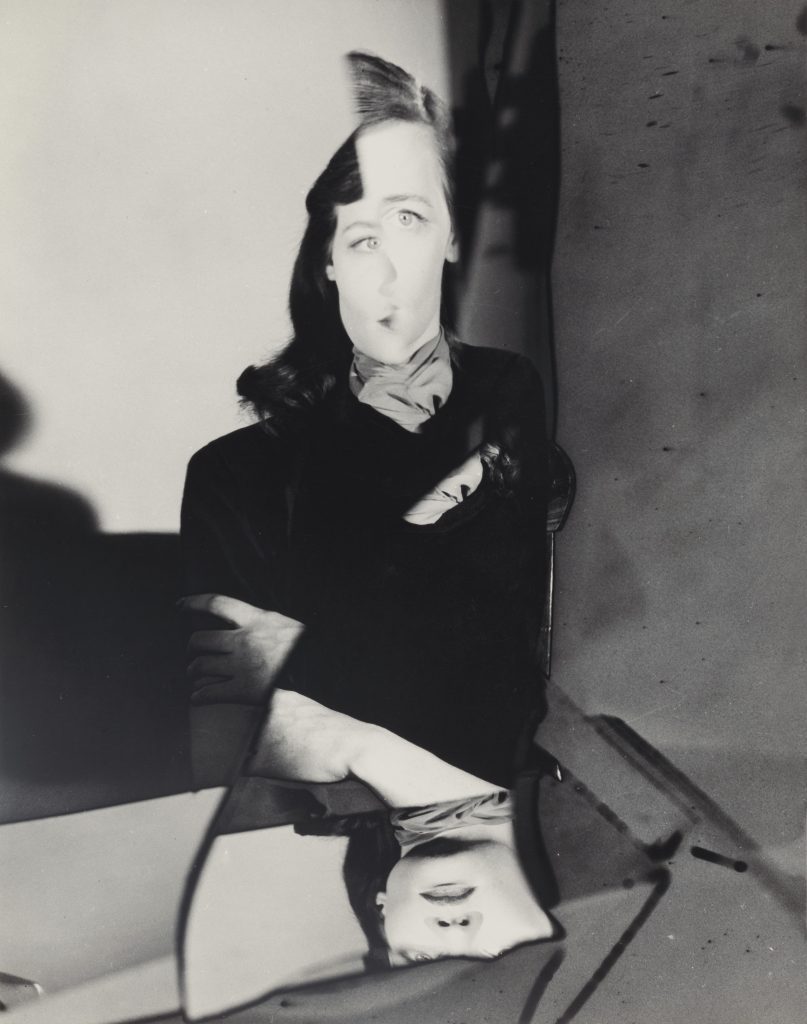Erwin Blumenfeld (1897-1969)
Tedi Thurman, New York, 1946
Gelatin silver print
Courtesy of the Leonid and Tatiana Nevzlin Collection
Erwin Blumenfeld, an American of German origin, was a successful fashion photographer. His artistic practice was informed by Dada and Surrealism. This image, which he dedicated to his favorite model, Tedi Thurman, was commissioned by Vogue. The fragmented mirror effect is used to showcase the different shades of lipstick reflected in the splintered glass.
Must Know
Erwin Blumenfeld was was born into a middle-class Jewish family in Berlin and in 1941 emigrated to the United States, where he soon became a successful and well-paid fashion photographer, working as a free-lancer for Harper’s Bazaar, Life and American Vogue. His personal photographic work showed the influence of Dadaism and Surrealism; his two main areas of interest were death and women. he was expert in laboratory work, and experimented with photographic techniques such as distortion, multiple exposure, photo-montage and solarisation. The term solarisation in photography is used to describe the effect of tone reversal observed in cases of extreme overexposure of the photographic film in the camera.
he was to become one of the most innovative and influential photographers of the 20th century. His early black-and-white nudes are widely considered to be among his best work, although it is his colour fashion photography, which combined his technical expertise in the darkroom (where he experimented with solarisation, multiple images and combining positive and negative images) with an innate sense of style and artistry, that made him rich and famous. After the war, during which he worked as an ambulance driver, Blumenfeld became friends with George Grosz, who was part of the Berlin Dada movement, and he continued to experiment with collages made using his photographs and magazine cuttings. Erwin was best known for his editorial photos, experimental fine art works and portraits of cultural icons. Often in both his independent and commissioned works, he combined black and white images with small areas of bright color. Following World War 1 he began working professionally and garnered international attention for his portraits of henri mattisse and George Roualt. In 1937, he began to work for Vogue. During World War 2 he was imprisoned in a Nazi concentration camp for two years and was released in 1941 to travel to New York for work.
he was innovating right up until the 1960s, making films to be used as beauty advertising: an idea that was ahead of its time.
Theodora “Tedi” Thurman was a fashion model and actress who found fame in the 1950s.

